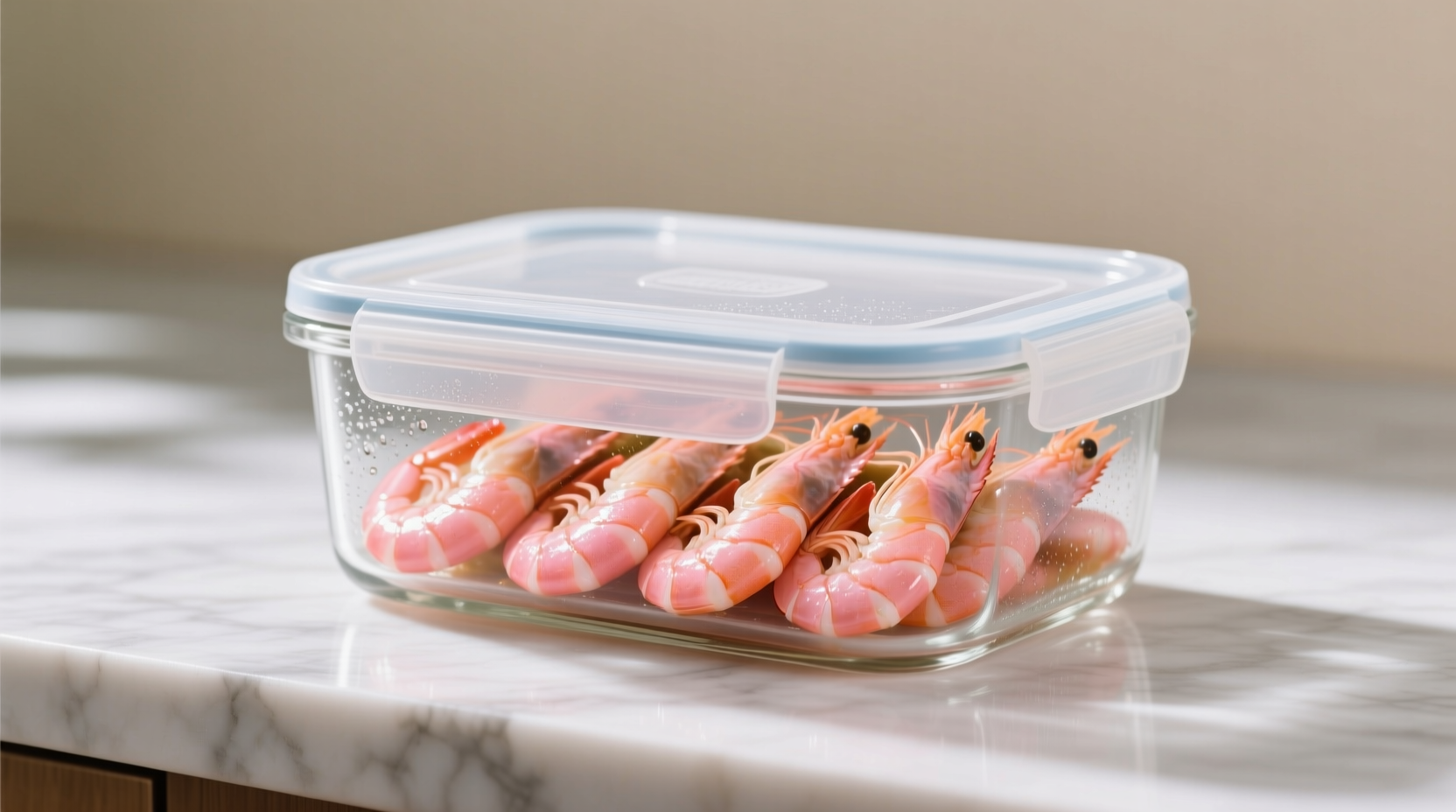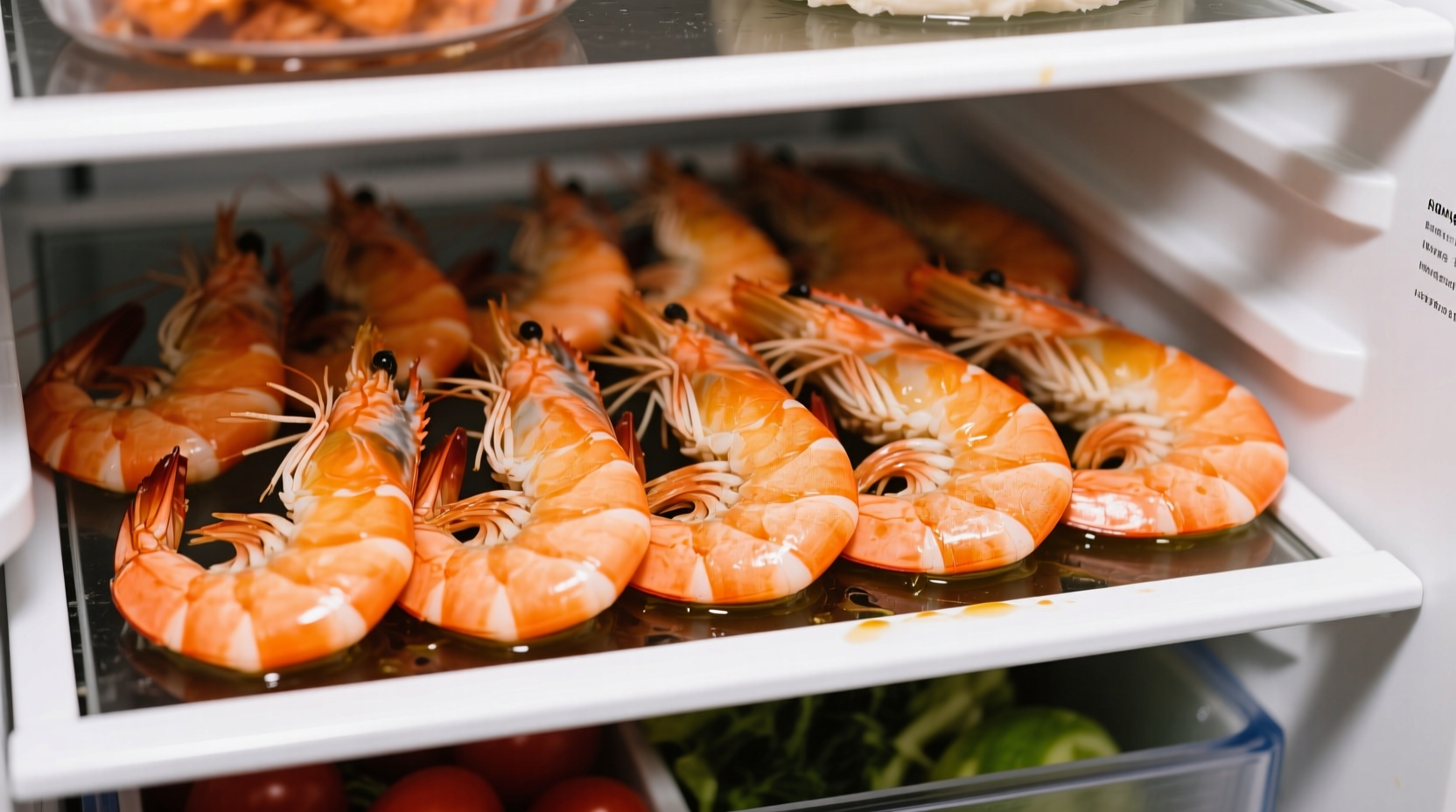You can safely store cooked shrimp in the refrigerator for 3 to 4 days when kept at 40°F (4°C) or below. This timeframe comes directly from USDA food safety guidelines to prevent bacterial growth that could cause foodborne illness. Proper storage techniques significantly impact how long your shrimp remains safe to eat.
Wondering if those leftover shrimp from last night's dinner are still good? You're not alone. Millions of home cooks face this question weekly, and the answer could mean the difference between a delicious meal and a trip to the emergency room. As someone who's handled seafood professionally for over 15 years, I've seen too many people gamble with food safety—don't be one of them.
Your Cooked Shrimp Refrigeration Timeline
When properly stored, cooked shrimp follows a predictable safety timeline. Understanding this progression helps you make informed decisions about your leftovers:
| Time After Cooking | Quality Status | Safety Risk Level | Recommended Action |
|---|---|---|---|
| 0-2 hours | Freshly cooked | Minimal | Refrigerate immediately |
| 2-4 hours | Still fresh | Moderate | Refrigerate with caution |
| Day 1-2 | Optimal quality | Low | Consume or freeze |
| Day 3-4 | Declining quality | Moderate to high | Consume immediately or discard |
| Day 5+ | Poor quality | High risk | Discard immediately |
This timeline aligns with USDA Food Safety and Inspection Service guidelines, which state that cooked seafood should be consumed within 3-4 days when refrigerated properly. The USDA explicitly confirms that "cooked fish and shellfish, including shrimp, can be safely stored in the refrigerator for 3 to 4 days."
Maximizing Your Shrimp's Refrigerator Lifespan
How you store cooked shrimp dramatically impacts how long it remains safe to eat. Follow these professional storage techniques to get the most out of your leftovers:
Cooling Process: The Critical First Step
Never place hot shrimp directly in your refrigerator. This raises the internal temperature of your fridge, creating a breeding ground for bacteria. Instead:
- Cool shrimp within 2 hours of cooking (1 hour if room temperature exceeds 90°F/32°C)
- Spread shrimp in a single layer on a clean baking sheet
- Place in a cool area away from direct sunlight
- Stir occasionally to release heat faster
Proper Container Selection
The container you choose matters more than you might think:
- Air-tight containers are essential—glass or BPA-free plastic with secure lids
- Avoid aluminum foil for shrimp in acidic sauces (like lemon or tomato), which can cause metallic flavors
- Portion control: Store in single-serving containers to minimize repeated exposure to air
- Leave ½ inch headspace in containers to accommodate condensation
Refrigerator Placement Matters
Not all spots in your refrigerator provide equal protection:
- Store shrimp on middle shelves where temperature is most consistent
- Avoid the door compartments where temperature fluctuates most
- Keep away from raw meats to prevent cross-contamination
- Ensure your refrigerator maintains 40°F (4°C) or below—use a thermometer to verify

How to Identify Spoiled Cooked Shrimp
When in doubt, throw it out—but here's how to confidently identify spoiled shrimp before that point:
Visual Indicators
Fresh cooked shrimp should maintain a relatively uniform pink or white color. Watch for:
- Discoloration (yellow, gray, or black spots)
- Excessive moisture or slimy film on surface
- Unnatural dullness compared to when first cooked
Sensory Warning Signs
Your senses provide the most immediate indicators of spoilage:
- Smell test: Fresh shrimp has a mild ocean scent. A strong ammonia or sour odor indicates spoilage.
- Texture check: Properly stored shrimp should be firm. Slippery or mushy texture means bacteria have begun breaking down proteins.
- Taste warning: Never taste questionable shrimp—this is how foodborne illness starts.
The FDA Food Code specifically states that food establishments must discard any seafood showing signs of spoilage. While home cooks have more flexibility, the same principles apply to your safety.
Extending Shelf Life: Freezing Cooked Shrimp
If you won't consume your shrimp within 3-4 days, freezing is your best option for preservation:
Professional Freezing Technique
- Cool shrimp completely using the methods described earlier
- Arrange in single layer on parchment-lined baking sheet
- Flash freeze for 1-2 hours until solid
- Transfer to vacuum-sealed or heavy-duty freezer bags
- Remove as much air as possible before sealing
- Label with contents and date
When properly frozen using this method, cooked shrimp maintains quality for 10-12 months. The USDA Food Safety and Inspection Service confirms that "cooked shrimp can be stored in the freezer for 3 to 6 months for best quality, though safe indefinitely at 0°F."
Special Considerations for Different Shrimp Preparations
Certain preparation methods affect storage timelines:
Shrimp in Sauce vs. Plain Shrimp
Shrimp stored in acidic sauces (tomato, lemon, vinegar) may break down faster due to the acid's effect on proteins. Consume within 2-3 days rather than the standard 3-4 days.
Cold Shrimp Dishes
Salads and ceviche containing cooked shrimp have shorter shelf lives due to additional ingredients:
- Shrimp salad with mayonnaise: 2 days maximum
- Ceviche with citrus: 24 hours maximum
- Pasta salads with shrimp: 3 days maximum
Why Food Safety Matters: The Real Risks
Ignoring proper storage guidelines isn't just about wasted food—it's a health risk. Seafood, particularly shellfish like shrimp, can harbor bacteria that cause serious illness:
- Vibrio vulnificus: Found in warm coastal waters, can cause severe illness in immunocompromised individuals
- Listeria monocytogenes: Can grow at refrigerator temperatures, particularly dangerous for pregnant women
- Staphylococcus aureus: Produces heat-stable toxins that aren't destroyed by reheating
The CDC reports that foodborne illnesses from seafood cause approximately 90,000 cases of illness annually in the United States. Most cases could be prevented with proper food handling and storage.
Practical Food Safety Checklist
Keep this quick reference handy for your next shrimp preparation:
- Refrigerate within 2 hours (1 hour if hot)
- Store at 40°F or below
- Consume within 3-4 days
- Discard if questionable—better safe than sorry
- Freeze for longer storage using proper technique











 浙公网安备
33010002000092号
浙公网安备
33010002000092号 浙B2-20120091-4
浙B2-20120091-4